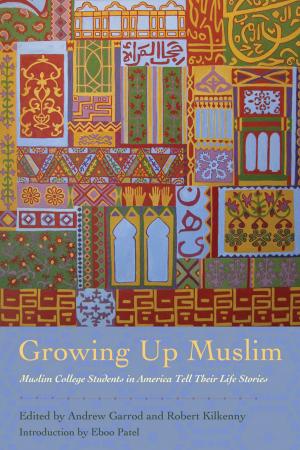| Author: | Douglas T. Northrop | ISBN: | 9781501702969 |
| Publisher: | Cornell University Press | Publication: | June 8, 2016 |
| Imprint: | Cornell University Press | Language: | English |
| Author: | Douglas T. Northrop |
| ISBN: | 9781501702969 |
| Publisher: | Cornell University Press |
| Publication: | June 8, 2016 |
| Imprint: | Cornell University Press |
| Language: | English |
Drawing on extensive research in the archives of Russia and Uzbekistan, Douglas Northrop here reconstructs the turbulent history of a Soviet campaign that sought to end the seclusion of Muslim women. In Uzbekistan it focused above all on a massive effort to eliminate the heavy horsehair-and-cotton veils worn by many women and girls. This campaign against the veil was, in Northrop's view, emblematic of the larger Soviet attempt to bring the proletarian revolution to Muslim Central Asia, a region Bolsheviks saw as primitive and backward. The Soviets focused on women and the family in an effort to forge a new, "liberated" social order.
This unveiling campaign, however, took place in the context of a half-century of Russian colonization and the long-standing suspicion of rural Muslim peasants toward an urban, colonial state. Widespread resistance to the idea of unveiling quickly appeared and developed into a broader anti-Soviet animosity among Uzbeks of both sexes. Over the next quarter-century a bitter and often violent confrontation ensued, with battles being waged over indigenous practices of veiling and seclusion.
New local and national identities coalesced around these very practices that had been placed under attack. Veils became powerful anticolonial symbols for the Uzbek nation as well as important markers of Muslim propriety. Bolshevik leaders, who had seen this campaign as an excellent way to enlist allies while proving their own European credentials as enlightened reformers, thus inadvertently strengthened the seclusion of Uzbek women—precisely the reverse of what they set out to do. Northrop's fascinating and evocative book shows both the fluidity of Central Asian cultural practices and the real limits that existed on Stalinist authority, even during the ostensibly totalitarian 1930s.
Drawing on extensive research in the archives of Russia and Uzbekistan, Douglas Northrop here reconstructs the turbulent history of a Soviet campaign that sought to end the seclusion of Muslim women. In Uzbekistan it focused above all on a massive effort to eliminate the heavy horsehair-and-cotton veils worn by many women and girls. This campaign against the veil was, in Northrop's view, emblematic of the larger Soviet attempt to bring the proletarian revolution to Muslim Central Asia, a region Bolsheviks saw as primitive and backward. The Soviets focused on women and the family in an effort to forge a new, "liberated" social order.
This unveiling campaign, however, took place in the context of a half-century of Russian colonization and the long-standing suspicion of rural Muslim peasants toward an urban, colonial state. Widespread resistance to the idea of unveiling quickly appeared and developed into a broader anti-Soviet animosity among Uzbeks of both sexes. Over the next quarter-century a bitter and often violent confrontation ensued, with battles being waged over indigenous practices of veiling and seclusion.
New local and national identities coalesced around these very practices that had been placed under attack. Veils became powerful anticolonial symbols for the Uzbek nation as well as important markers of Muslim propriety. Bolshevik leaders, who had seen this campaign as an excellent way to enlist allies while proving their own European credentials as enlightened reformers, thus inadvertently strengthened the seclusion of Uzbek women—precisely the reverse of what they set out to do. Northrop's fascinating and evocative book shows both the fluidity of Central Asian cultural practices and the real limits that existed on Stalinist authority, even during the ostensibly totalitarian 1930s.















